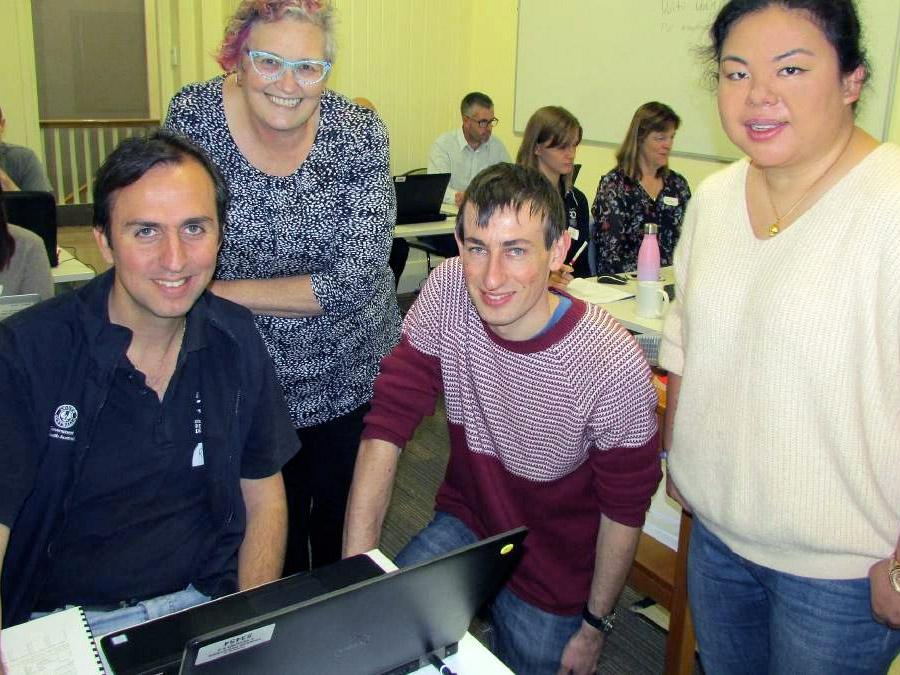Data science the hero of grain improvements

The statistical skills of grains researchers and agronomists throughout the southern cropping region are being taken to a new level, thanks to training support being offered through the GRDC's Statistics for the Australian Grains Industry (SAGI) program.
A suite of new, practical, interactive workshops, available to grains industry practitioners in South Australia, Victoria and Tasmania, was conducted in 2018.
These aimed to foster widespread adoption of efficient and consistent statistical methods in agronomic research and practice to ultimately better inform growers’ decision-making.
SAGI South is being led by the University of Adelaide, with co-investment from the University and the South Australian Research and Development Institute (SARDI).
The SAGI South team is based at the University’s Waite campus Biometry Hub.
Project leader, senior statistician Olena Kravchuk, of the University’s School of Agriculture, Food and Wine, says the program offered an opportunity for researchers and agronomists to develop their skills in the practice of design and analysis of research trials.
“We are doing this through a people-centred workplace education approach which is engaging for the participants,” Dr Kravchuk says.
“The training program uses a small-group, face-to-face delivery. This builds learning communities by allowing a close communication between participants and trainers.”
The southern workshops were presented by SAGI South team members Sam Rogers, Wendy Li and Sharon Nielsen.
Ms Nielsen says having researchers and agronomists skilled in using 'R' software enables a quick dissemination of tailored and benchmark statistical procedures for design, data analysis and reporting in the region, improving the transparency and the quality of research and extension.
“The overall program is structured and designed so participants can start from ‘ground zero’, they learn to handle their data via the R software, progress to being able to design and conduct reproducible analyses of standard agronomy trials with simple responses, and finally present a quality report document,” she says.
The Southern SAGI node also provides statistical support to a portfolio of GRDC regional research investments.
"The training program uses a small-group, face-to-face delivery. This builds learning communities by allowing a close communication between participants and trainers"SAGI South project leader Olena Kravchuk
Role of SAGI
SAGI South is one of four nodes of this initiative across Australia, set up by GRDC to deliver an unprecedented level of high quality statistical science to underpin the scientific rigour of hundreds of research projects.
Last year GRDC Managing Director Dr Steve Jefferies announced the SAGI-3 investment of $18 million over the next five years.
He says it will be essential in supporting rapid advances in crop varieties, agronomic knowledge and farming practices – ultimately contributing to enduring profitability for Australian grain growers.
“This significant investment will increase the national grains industry’s capacity in the area of biometrics – the application of statistics to biological data – which is incredibly important in ensuring that grains research is statistically sound and credible, as well as speeding up research outcomes for the benefit of growers,” he says.
“Statistical science is an unsung hero of improvements in the grains industry.
"Through the GRDC’s statistical investments over the past 15 years, statistical science has played a critical role in the breeding of better grain varieties and more efficient research development and extension (RD&E) targeting grower priorities.
“Importantly, the GRDC’s long-term investment in SAGI has created enduring capacity in world-class biometricians in Australia and this generation of mid-career statisticians will continue to benefit the grains industry as they grow into our next crop of statistical leaders."
Each of the regional SAGI Nodes (North, South, and West) will provide support for trial design and data analysis for projects relevant to their regions – these are projects developed as part of GRDC’s Grower and Applied R&D business groups.
The regional nodes will also be responsible for providing statistical training and support for regional agronomists, providing training, mentoring and statistical research collaborative support to researchers, and training a new generation of highly-skilled biometricians.
The SAGI regional nodes will be closely linked to each other and to the national node through training and research initiatives, as well as collaborative projects.
About this article
The original article was published in GRDC's Ground Cover.
